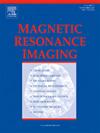2023年FIGO期子宫内膜癌的时间依赖扩散MRI诊断。
IF 2
4区 医学
Q2 RADIOLOGY, NUCLEAR MEDICINE & MEDICAL IMAGING
引用次数: 0
摘要
目的:本研究探讨了时间依赖扩散MRI在评估子宫内膜癌(EC)与2023年修订的国际妇产科学联合会(FIGO)分期相关的病理特征中的应用,包括组织学类型、大量淋巴血管间隙浸润(LVSI)和淋巴结转移(LNM)。方法:本回顾性单中心研究纳入93例EC患者,采用振荡梯度自旋回波(OGSE)和脉冲梯度自旋回波(PGSE)序列进行弥散加权成像(DWI) MRI检查。采用感兴趣肿瘤区域测量OGSE (ADCOGSE)和PGSE (ADCPGSE)的平均表观扩散系数(ADC)值以及ADCOGSE/ADCPGSE比值。采用Mann-Whitney U检验、受试者工作特征(ROC)曲线分析和Spearman等级相关系数评价ADC参数与病理因素的相关性。结果:LNM存在时ADCPGSE明显降低(P = 0.011)。ADCOGSE/ADCPGSE在侵袭型、严重LVSI、LNM和FIGO II-IV期中显著升高(均P 结论:时间依赖扩散MRI有效识别与2023 FIGO期相关的EC特征。本文章由计算机程序翻译,如有差异,请以英文原文为准。
Time-dependent diffusion MRI for 2023 FIGO stage of uterine endometrial cancer
Purpose
This study investigated the utility of time-dependent diffusion MRI in assessing pathological characteristics of endometrial cancer (EC) associated with the 2023 revised International Federation of Gynecology and Obstetrics (FIGO) stage, including histological type, substantial lymphovascular space invasion (LVSI), and lymph node metastasis (LNM).
Methods
This retrospective single-center study included 93 patients with EC who underwent diffusion-weighted imaging (DWI) MRI with oscillating gradient spin–echo (OGSE) and pulsed gradient spin–echo (PGSE) sequences. Mean apparent diffusion coefficient (ADC) values for OGSE (ADCOGSE) and PGSE (ADCPGSE) and ADCOGSE/ADCPGSE ratio were measured using tumor regions of interest. Mann–Whitney U test, receiver operating characteristic (ROC) curve analysis, and Spearman's rank correlation coefficients were conducted to evaluate the associations between ADC parameters and pathological factors.
Results
ADCPGSE was significantly lower in the presence of LNM (P = 0.011). ADCOGSE/ADCPGSE was significantly higher in aggressive type, substantial LVSI, LNM, and FIGO stages II–IV (all P < 0.001). Area under the ROC curve of the ADCOGSE/ADCPGSE ratio consistently demonstrated statistical superiority over ADCOGSE and ADCPGSE independently for the prediction of aggressive type (0.85, 95 % confidence interval [CI]: 0.76–0.91), substantial LVSI (0.91, 95 % CI: 0.83–0.96), LNM (0.93, 95 % CI: 0.85–0.97), and FIGO stages II–IV (0.78, 95 % CI: 0.68–0.86) (all P < 0.05). ADCOGSE/ADCPGSE was the only metric significantly correlated with the 2023 FIGO stage (P < 0.001, ρ = 0.50).
Conclusion
Time-dependent diffusion MRI effectively identifies EC characteristics associated with the 2023 FIGO stage.
求助全文
通过发布文献求助,成功后即可免费获取论文全文。
去求助
来源期刊

Magnetic resonance imaging
医学-核医学
CiteScore
4.70
自引率
4.00%
发文量
194
审稿时长
83 days
期刊介绍:
Magnetic Resonance Imaging (MRI) is the first international multidisciplinary journal encompassing physical, life, and clinical science investigations as they relate to the development and use of magnetic resonance imaging. MRI is dedicated to both basic research, technological innovation and applications, providing a single forum for communication among radiologists, physicists, chemists, biochemists, biologists, engineers, internists, pathologists, physiologists, computer scientists, and mathematicians.
 求助内容:
求助内容: 应助结果提醒方式:
应助结果提醒方式:


